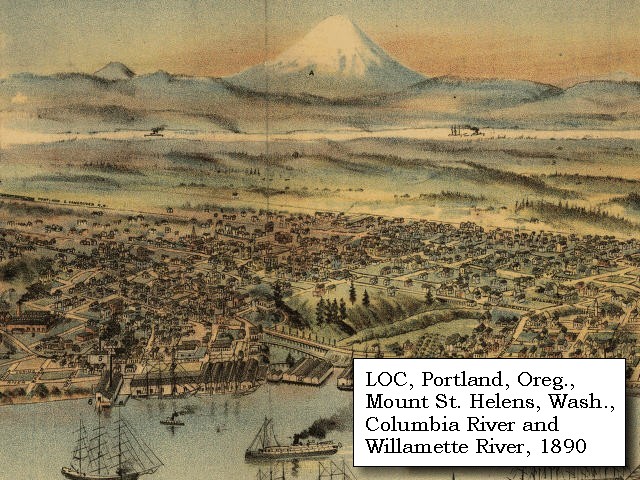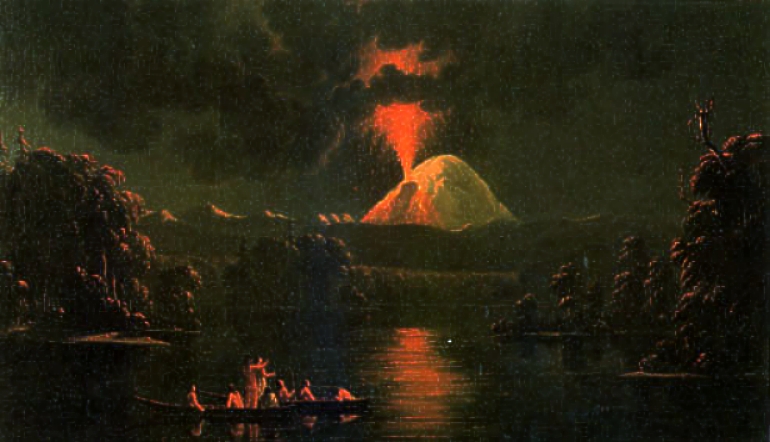"Mount St. Helens is most notorious for its major eruption on May 18, 1980, the deadliest and most economically destructive volcanic event in U.S. history."
I told John Bravehawk that Is Is is wakan, and he said, " I hope so, " there on the three meter thick loam of Sandy River's geo cataclysmic layer cake.
" A massive debris avalanche, triggered by an earthquake of magnitude 5.1, caused a lateral eruption that reduced the elevation of the mountain's summit from 9,677 ft (2,950 m) to 8,363 ft (2,549 m), leaving a 1 mile (1.6 km) wide horseshoe-shaped crater.
The debris avalanche was up to 0.7 cubic miles (2.9 km3) in volume."
https://en.wikipedia.org/wiki/Mount_St._Helens
before eruption






"The Klickitat (also spelled Klikitat) are a Native American tribe of the Pacific Northwest. Today most Klickitat are enrolled in the federally recognized Confederated Tribes and Bands of the Yakama Nation, some are also part of the Confederated Tribes of the Grand Ronde Community of Oregon.
A Shahaptian tribe, their eastern neighbors were the Yakama, who speak a closely related language.
Their western neighbors were various Salishan and Chinookan tribes. Their name has been perpetuated in Klickitat County, Washington, Klickitat, Washington, Klickitat Street in Portland, Oregon, and the Klickitat River, a tributary of the Columbia River.
The Klickitat were noted for being active and enterprising traders, and served as intermediaries between the coastal tribes and those living east of the Cascade Mountains."

"The ethnonym Klikitat is said to derive from a Chinookan word meaning "beyond," in reference to the Rocky Mountains. The Klickitat, however, call themselves Qwû'lh-hwai-pûm or χwálχwaypam, meaning "prairie people" (X̣ʷáɬx̣ʷaypam"
"In 1805, the Klickitat were encountered by the Lewis and Clark Expedition.
Lewis and Clark found them wintering on the Yakima and Klickitat Rivers and estimated their number at about 700."
"Between 1820 and 1830, an epidemic of fever struck the tribes of the Willamette Valley.
The Klickitat took advantage of the drop in population in this region and crossed the Columbia River and occupied territory occupied by the Umpqua. This was not permanent, however, as they were pushed back to their original homeland."
_______
"The Multnomah name for Mount Hood was Wy'east.
In one version of the legend, the two sons of the Great Spirit Sahale
fell in love with the beautiful maiden Loowit,
who could not decide which to choose.
The two braves, Wy'east and Pahto
, burned forests and villages
in their battle over her. Sahale became enraged
and smote the three lovers.
Seeing what he had done,
he erected three mountain peaks
to mark where each fell.
He made beautiful Mount St. Helens for Loowit,
proud and erect Mount Hood for Wy'east,
and the somber Mount Adams for the mourning Pahto.
There are other versions of the legend.
In another telling, Wy'east (Hood) battles Pahto (Adams)
for the fair La-wa-la-clough (St. Helens).
Or again Wy'east, the chief of the Multnomah tribe,
competed with the chief of the Klickitat tribe.
Their great anger led to their transformation into volcanoes.
Their battle is said to have destroyed
the Bridge of the Gods
and thus created the great Cascades Rapids
of the Columbia River"
https://en.wikipedia.org/wiki/Mount_Hood

No comments:
Post a Comment